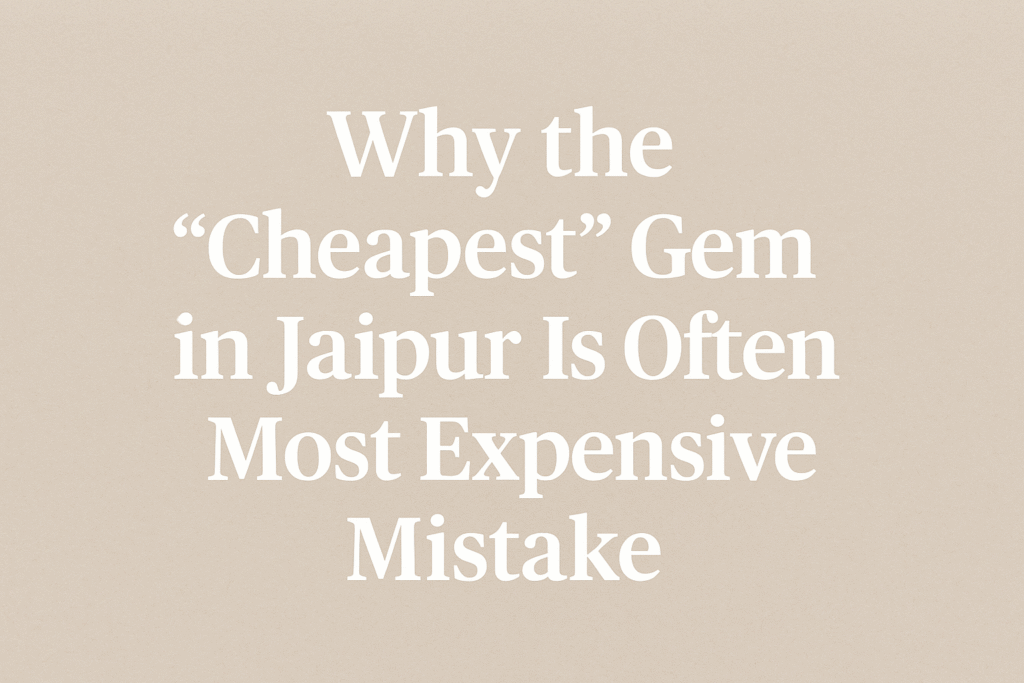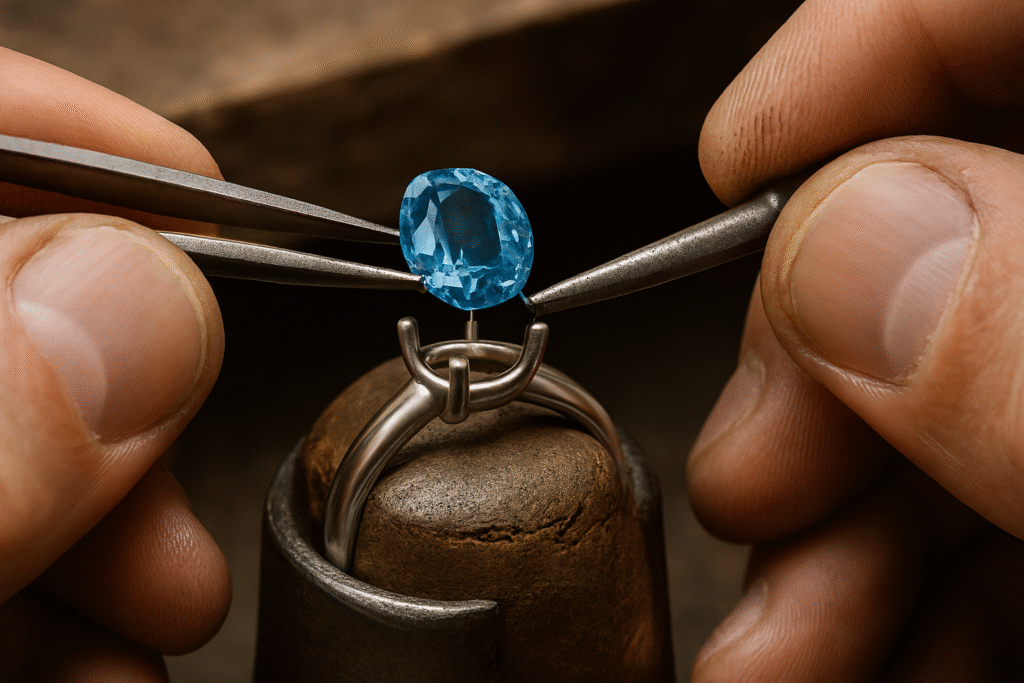Jaipur Gem Buying Tips – How to Avoid the “Cheap Stone” Trap
Don’t let low prices fool you. Learn why Jaipur’s cheapest gems often cost you more in the long run. Understand price vs. value in gemstone buying.
You come to Jaipur looking for a deal.
The shopkeeper shows you an emerald.
The price is low.
You think you’ve won.
But did you?
Let’s break it down.
What Drives the Price of a Gem?
A gemstone’s price depends on a mix of factors:
- Color
Rich, even color costs more.
A pale or uneven stone will be cheaper—but also less desirable. - Clarity
Fewer visible flaws mean higher value.
An emerald full of black spots may be cheaper but harder to resell. - Cut
A well-cut gem reflects light evenly.
Poor cuts make even good color look dull. - Treatment
Many low-cost stones are heavily treated—glass-filled, dyed, or oiled.
They look good today, but won’t hold value.
Cheap vs. Worth It: A Real Comparison
Let’s say you’re shown two emeralds:
- One costs ₹2,000. The color is dull. The stone looks hazy.
- The second costs ₹4,500. It’s clearer and brighter.
The first one looks like a deal.
But which one will impress when set in gold?
Which one will hold up under a jeweler’s loupe?
Which one will a buyer want five years from now?
Ask Yourself
- Are you buying to wear, gift, or invest?
- Will this piece stand the test of time—or just look pretty under soft shop lights?
- Are you okay with a stone that chips or fades after a few months?
How to Avoid the Trap
- Don’t shop with only price in mind.
- Ask about treatments. Ask for a lab report.
- Compare stones side by side under natural light.
- Look beyond the showcase—ask to see similar pieces in other price ranges.
- Pay for quality, not hype.
Final Tip
In Jaipur, the best value is rarely the lowest price.
A ₹5,000 gem that lasts is cheaper than a ₹2,000 one that fails.



